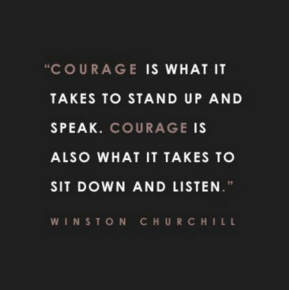Nearly half (46 percent) of new Chief Executive Officers (CEOs) receive little or no help from their boards when first taking their positions, according to a recent survey by the Bridgespan Group. Considering the importance of first impressions and the complex dynamics of an organization in transition, this percentage is startling. Many new non-profit leaders are surprised to find the way forward is uncertain and ambiguous—a hurdle that can put both the new CEO and the organization at risk.
The good news is that you can take charge of ensuring a smooth start by creating and following your own onboarding plan. This is the first in a series of three blog posts that will provide you with timeless steps from our collective experience and that of other experts, for getting it right.

John Taylor, New CEO, ACUI
John Taylor, CEO of the Association of College Unions International (ACUI) had this to say about the series: “As a new CEO, the article’s main points to invest time in learning, building relationships, and establishing priorities have been key during my first six months on the job.”
Note that although we make reference to associations throughout the posts, these tips apply to any non-profit organization and are adaptable to the for-profit sector as well.
- LISTEN to Learn
In many high-pressure environments, deep listening distinguishes the highly experienced from the amateurs. “Seek first to understand, then to be understood”, said Stephen Covey in 7 Habits of Highly Effective People. Stated more directly, one association executive advised his peers to “resist the temptation to prove how bright you are; do nothing when you first arrive—just learn.”
Your first months on the job are the perfect opportunity to take advantage of many learning opportunities that surround you. Think broadly. Develop a list for listening interviews including staff, board members, active volunteers, randomly selected members, dropped members, industry leaders, subject matter experts, external partners, and others. Everyone has something to say; they often will be flattered by your curiosity, as well as encouraged by your desire to learn. Ask open-ended questions. Prepare to be surprised. Though many relationships will deepen during your tenure, early conversations can provide unique opportunities for candid exchanges unencumbered by baggage, fears, or agendas.
Schedule formal conversations that include a few consistent questions to help you compare perspectives. Take advantage of informal encounters in the office kitchen or hotel lobbies as well. This is your honeymoon period. Use it wisely.
- COMMUNICATE!
It is almost impossible to over-communicate in an association or nonprofit community. There is a whirlwind of activity among and between members, volunteer leaders, external partners, staff, and others—few of whom are in the same room, many of whom aren’t in the same city or country. Remember the communication clichés because they are true: a.) Perception is reality, b.) In the absence of information, people fill the vacuum with their assumptions, and c.) Communication builds trust.
Here are a few things to keep in mind:
- Staff members are vitally interested in what the boss
This is the first in a series of three blog posts that will provide you with timeless steps from our collective experience and that of other experts, for getting off to a good start with your own onboarding program. To get notification when the next posts in the series go up, please subscribe to our newsletter.
Resources:
First Time CEO? Here Are Some Tips to Help Make Your Transition Smooth, chiefexecutive.net blog post, July 21, 2014
Confessions of a New CEO: Lessons Learned in My First Year, Michael Fraser and Kevin Keller, Presentation at ASAE 2009 Annual Meeting
The authors: Alan Davis, Jolene Knapp, and Deb Nystrom are senior partners at Ideas for Action, LLC—a consulting practice that is driven by a passion to empower the potential of people and organizations. Their collective experience includes association, non-profit, and higher education leadership, governance, and management; organizational development; strategic planning; and executive coaching.
This work is licensed under a Creative Commons Attribution-NonCommercial-NoDerivatives 4.0 International License.

